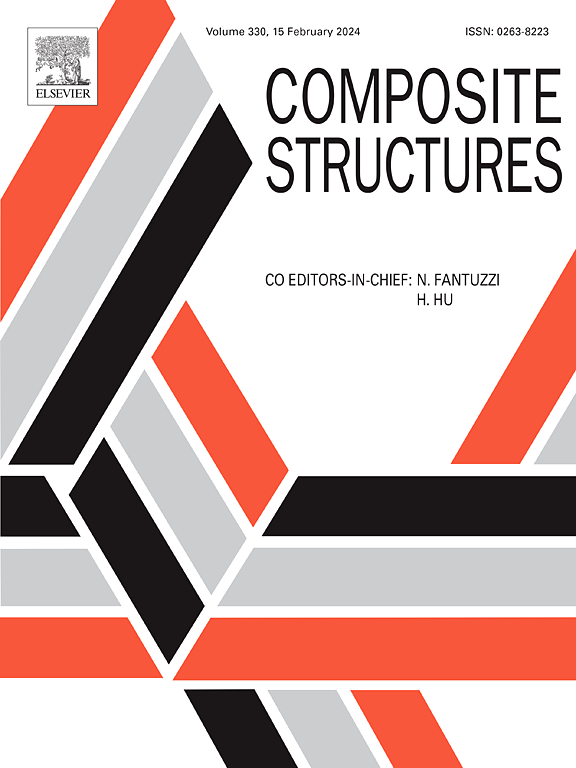Design and analysis of the thick-wall cylindrical origami metamaterials based on tessellation principles
IF 6.3
2区 材料科学
Q1 MATERIALS SCIENCE, COMPOSITES
引用次数: 0
Abstract
Origami structures with embedded creases provide predesigned deformed paths that could enhance the mechanical properties upon loading. Nature has provided hints from the cross-section of the hexagon-filled tessellation pattern of the bamboo and the porous protective layer of the pomelo peel, but the design method of the mechanical metamaterials that combines both energy absorption and protection capacities remains unknown. Inspired by this, the novel design method of the thick-wall cylindrical origami-based metamaterials (TCOM) derived from different tessellation patterns is provided, and both capacities are studied under two loading cases. The main parameters, such as layer heights ranging from to and rotation angles of 1°, 3°, and 5°, are varied to investigate their influence on these two capacities. The results show that these two capacities are generally incompatible, and the mixed polygon tessellation patterns stand out. We found that the specific energy absorption (SEA) capacity could be inversely programmable from the parametric study results, hence an optimization method based on the Gaussian Process Regression is provided as a design tool by a simple input of a user-preferred SEA value, hence providing a programmable energy-absorption capacity design tool for the future applications of the cylindrical origami-based mechanical metamaterials. The research here sheds light on the effects of tessellation design principles on origami-based mechanical metamaterial design.
基于镶嵌原理的厚壁圆柱形折纸超材料设计与分析
具有嵌入折痕的折纸结构提供了预先设计的变形路径,可以增强加载时的机械性能。大自然从竹子的六边形填充镶嵌图案的横截面和柚子皮的多孔保护层中提供了线索,但结合能量吸收和保护能力的机械超材料的设计方法仍然未知。受此启发,提出了基于不同镶嵌图案的厚壁圆柱形折纸基超材料(TCOM)的新设计方法,并在两种载荷情况下对其承载力进行了研究。改变主要参数,如层高为5mm至10mm,旋转角度为1°,3°和5°,以研究它们对这两种能力的影响。结果表明,这两种能力一般是不相容的,混合多边形镶嵌图案尤为突出。从参数化研究结果中,我们发现比能量吸收(SEA)容量可以逆向编程,因此,通过简单输入用户偏好的SEA值,提供了一种基于高斯过程回归的优化方法作为设计工具,从而为未来圆柱折纸机械超材料的应用提供了一种可编程的能量吸收容量设计工具。本研究揭示了镶嵌设计原理对基于折纸的机械超材料设计的影响。
本文章由计算机程序翻译,如有差异,请以英文原文为准。
求助全文
约1分钟内获得全文
求助全文
来源期刊

Composite Structures
工程技术-材料科学:复合
CiteScore
12.00
自引率
12.70%
发文量
1246
审稿时长
78 days
期刊介绍:
The past few decades have seen outstanding advances in the use of composite materials in structural applications. There can be little doubt that, within engineering circles, composites have revolutionised traditional design concepts and made possible an unparalleled range of new and exciting possibilities as viable materials for construction. Composite Structures, an International Journal, disseminates knowledge between users, manufacturers, designers and researchers involved in structures or structural components manufactured using composite materials.
The journal publishes papers which contribute to knowledge in the use of composite materials in engineering structures. Papers deal with design, research and development studies, experimental investigations, theoretical analysis and fabrication techniques relevant to the application of composites in load-bearing components for assemblies, ranging from individual components such as plates and shells to complete composite structures.
 求助内容:
求助内容: 应助结果提醒方式:
应助结果提醒方式:


